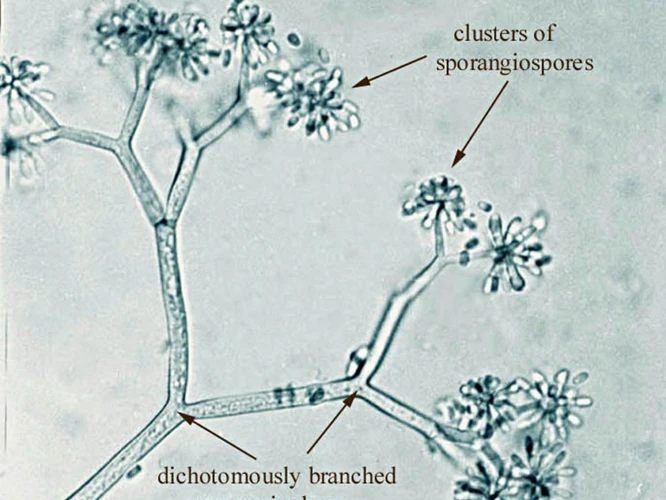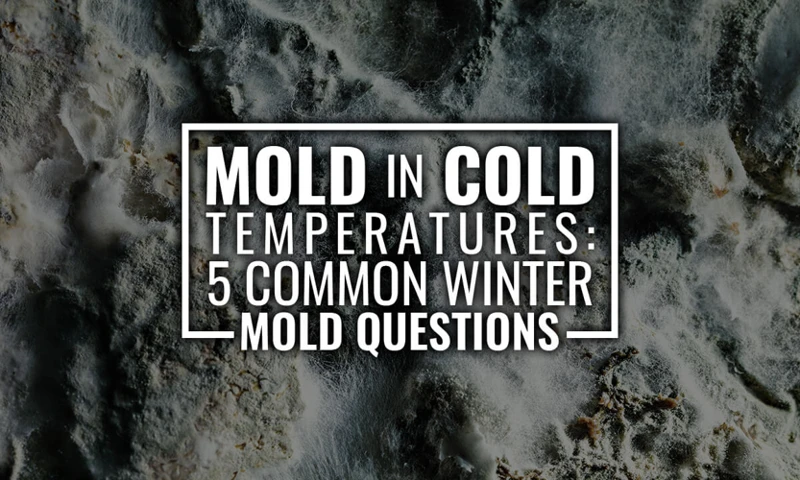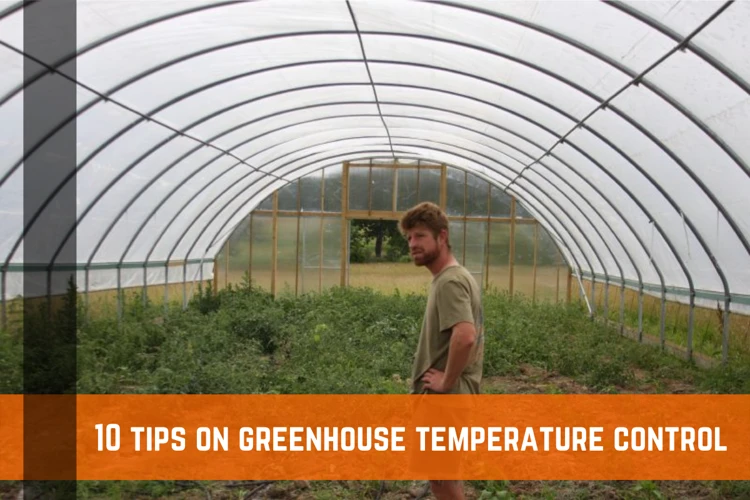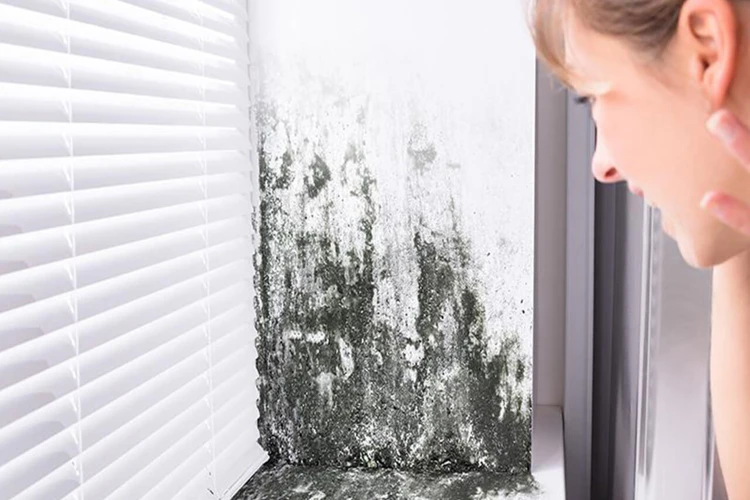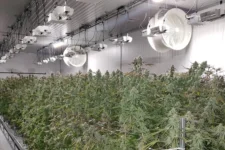
Preventing Mold Growth in Your Grow Room with Temperature Control
As a cannabis grower, you might be well aware of the adverse effects mold can have on your plants. Despite taking all the necessary precautions, sometimes mold can still sneak its way into your grow room, leaving you puzzled and frustrated. One crucial aspect of preventing mold growth in your grow room is temperature control. The temperature not only affects the growth of your plants but also plays a vital role in the development of mold. Hence, it is essential to understand how temperature affects mold growth and the best temperature control practices to implement in your grow room. In this article, we will discuss in detail the role of temperature control in preventing mold growth and provide you with practical tips to keep your plants healthy and thriving.
Understanding Mold Growth
Contents
Mold is a common problem that can develop in indoor grow rooms, and it can have negative consequences on the quality and safety of the yield. To effectively prevent mold growth, it’s important to first understand what mold is and why it’s harmful. By delving into the details of mold growth, cultivators can gain insight into the environmental conditions in which mold thrives and how temperature plays a crucial role in this process.
What is Mold?
Mold is a fungus that grows in damp and warm environments, which means it can thrive in your grow room if not adequately controlled. Mold spores are present in the air around us, and they can quickly multiply and spread on plants, walls, and other surfaces with excess moisture.
Here is a table that summarizes some key characteristics of mold:
| Type of Organism | Classification | Appearance |
|---|---|---|
| Fungus | Kingdom: Fungi | Can appear as fuzzy, black, brown, green, or white patches |
Mold spreads and reproduces by releasing spores into the air. Once these spores land on a damp surface, they can grow and multiply, creating a large colony of mold. Some types of mold are beneficial to the environment, like those that decompose organic matter. Still, others can cause health problems for people, especially if they have allergies or respiratory issues.
It’s crucial to prevent mold growth in your grow room as it can affect not only the quality and potency of your cannabis crop but also the health and safety of anyone who consumes it. In the next sections, we will discuss in detail the potential harm caused by mold and how maintaining proper temperature control can help prevent it.
Why is it Harmful?
Mold is a type of fungus that can grow in areas with high levels of moisture and organic material, such as grow rooms. Mold can cause a variety of health problems, including infections, allergies, and respiratory issues. It can also damage equipment, plants, and crops.
Here are just a few of the ways that mold can be harmful:
| Health Issues | Equipment and Crop Damage |
|---|---|
|
|
To avoid these harmful effects, it’s important to take steps to prevent mold growth in your grow room. One key factor to consider is temperature control.
How Temperature Affects Mold Growth
One crucial factor that affects the growth of mold in your grow room is temperature. The temperature levels in your grow room can either prevent or encourage mold growth. Maintaining the right temperature range is essential for creating a healthy environment for your plants to thrive. In this section, we will delve into how temperature affects mold growth and the ideal temperature range for growing cannabis. We’ll also discuss the effects of high and low temperatures on mold growth in your grow room. So, let’s dive in and explore how temperature control can help prevent mold growth in your grow room.
Ideal Temperature Range
The ideal temperature range for preventing mold growth in your grow room is between 68°F and 77°F. It’s important to maintain a consistent temperature within this range to create an environment that inhibits mold growth.
Temperature fluctuations can create condensation, which creates a damp environment – the ideal breeding ground for mold. To prevent this, it’s vital to make sure the temperature remains constant throughout the day and night.
If temperatures rise above 82°F, mold spores can reproduce at alarming rates. High temperatures also exacerbate humidity levels, creating an even more favorable environment for mold growth. On the other hand, temperatures below 64°F slow down the growth of mold spores, but they do not prevent them from growing altogether.
Keeping the temperature within the ideal range of 68°F to 77°F is crucial to prevent mold growth in your grow room.
Effects of High and Low Temperatures
Temperature is a key factor in controlling mold growth in grow rooms. High temperatures can lead to increased moisture build-up and encourage mold growth. Meanwhile, low temperatures can slow down the growth of mold, but it can also affect the growth of the plants. It is important to maintain a proper temperature range to avoid any negative effects.
Here are some of the negative effects of exposing your grow room to high or low temperatures:
| High temperature effects | Low temperature effects |
|---|---|
| Increased moisture leads to mold growth | Slow growth in plants |
| Reduced potency of plants through damage to terpenes and cannabinoids | Stunted growth and reduced yield |
| Increased risk of spider mites and other pests | Risk of bacterial infections |
| Shortened lifespan of plants due to increased stress | Reduced resistance to diseases and pests |
It is important to monitor the temperature in your grow room and ensure it remains within the ideal range to promote healthy plant growth and prevent mold growth.
Best Temperature Control Practices
Maintaining a consistent temperature in your grow room is crucial in preventing mold growth. There are various temperature control practices that can help you achieve this goal. By following these practices, you can ensure that your plants grow in a healthy environment, free from destructive mold. Let’s explore some of the best ways to control the temperature in your grow room.
Invest in a Reliable HVAC System
One of the most important steps in preventing mold growth in your grow room is to invest in a reliable HVAC system. HVAC stands for heating, ventilation, and air conditioning. A good HVAC system will help maintain a consistent temperature and humidity level, which is critical for preventing mold.
Here are some reasons why investing in a reliable HVAC system is important:
- Regulates Temperature: Temperature fluctuations can promote mold growth in your grow room. An HVAC system can help regulate the temperature, keeping it consistent and optimum for plant growth.
- Maintains Humidity Levels: Humidity levels that are too high or too low can also promote mold growth. An HVAC system can help maintain the ideal humidity level range of 45-55% in your grow room.
- Filters Air: An HVAC system can help filter the air in your grow room, removing any mold spores or other contaminants that could harm your plants. It’s important to change the filters regularly to maintain efficiency.
- Prevents Condensation: Condensation can occur when warm and cold air meet. This can create the perfect environment for mold growth. An HVAC system can help prevent condensation by maintaining a consistent temperature and humidity level.
- Energy Efficiency: Investing in an energy-efficient HVAC system can save you money on your energy bills in the long run. Plus, it’s environmentally friendly.
Choosing the right HVAC system for your grow room is crucial. Consider factors such as the size of your grow room, the number of plants you have, and your budget. It’s important to have a system that is the right size and capacity for your needs.
Investing in a reliable HVAC system is a smart choice for preventing mold growth in your grow room. It not only promotes healthy plant growth, but it also helps ensure the safety and quality of your cannabis products.
Install Thermometers and Humidity Meters
Keeping track of the temperature and humidity levels in your grow room is essential to prevent mold growth. Installing thermometers and humidity meters is one of the best ways to monitor these factors. Here are some reasons why:
- Accurate Measurements: Investing in a reliable thermometer and humidity meter will help you measure the temperature and humidity levels accurately. This will help you make informed decisions about how to adjust your HVAC system.
- Early Detection: If you notice sudden changes in temperature or humidity levels, you may be able to detect mold growth early. Accurate readings from thermometers and humidity meters can help you spot any sudden changes in the environment and take corrective action before things get worse.
- Prevention: By consistently monitoring the temperature and humidity levels in your grow room, you can prevent mold growth before it starts. If you notice the humidity getting too high, for example, you can turn on a dehumidifier to bring it back down to a safe range.
When installing a thermometer and humidity meter, make sure they are placed in a central location in your grow room where they can easily detect changes in temperature and humidity. Avoid placing them in direct sunlight or near any heat sources, as this can affect the accuracy of their readings.
In addition to installing these meters, it’s essential to regularly check their readings and adjust your HVAC system as needed to maintain a stable environment. Doing so will help you prevent mold growth and create optimal conditions for your cannabis plants to thrive.
Use Fans and Ventilation Systems
Using fans and ventilation systems is essential in maintaining proper temperature and humidity levels in your grow room, which is crucial in preventing mold growth. Here are some tips on how to use fans and ventilation systems effectively:
- Position your fans strategically: Circulating air is critical for eliminating hot spots and cold spots. Place your fans in an area where they can create airflow that evenly circulates throughout the grow room.
- Invest in quality fans: Not all fans are created equal. Look for fans that are durable, efficient, and designed for continuous use. This way, you can avoid frequent replacements and ensure that they are doing a good job in keeping the air moving.
- Use oscillating fans: Oscillating fans are great in preventing stagnant air that can lead to mold growth. By moving side to side, they evenly distribute air throughout the room and help prevent the formation of microclimates that can lead to mold growth.
- Use ventilation systems: In addition to fans, ventilation systems can help regulate temperature and humidity levels in your grow room. Ventilation can control odors, keep CO2 levels balanced, and prevent excess humidity. Make sure your ventilation system is properly-sized and designed for your grow room.
- Clean your fans and ventilation systems regularly: Dirt and debris can accumulate on your fans and ventilation systems, reducing their efficiency and airflow. Clean them regularly to ensure that they are working at their maximum capacity, and to prevent mold growth from forming on any buildup that may occur.
Using fans and ventilation systems should be an integral part of your overall temperature control plan. By creating a consistent and even air flow, you can maintain stable temperature and humidity levels, and prevent mold from growing in your grow room.
Avoid Temperature Fluctuations
Maintaining a consistent temperature is crucial to prevent mold growth in your grow room. Temperature fluctuations can create the ideal conditions for mold to thrive. Mold spores are opportunistic, and they will quickly grow and spread if they find the right environment. To avoid this, follow these best practices:
- Insulate your Grow Room: Insulating your grow room can help stabilize the temperature and prevent fluctuations. Use insulation panels or reflective materials to create a barrier between your plants and the outside environment.
- Use Automated Temperature Control: Invest in an automated temperature control system that can regulate the temperature in your grow room. This will ensure that your plants are always in the ideal temperature range, and you won’t have to worry about temperature fluctuations caused by human error.
- Avoid Overcrowding: Overcrowding your grow room can cause temperature fluctuations as your plants compete for space and resources. Make sure to give each plant enough space to grow and thrive, and consider using a trellis or other support system for plants that need it.
- Avoid Opening the Door Too Often: Every time you open the door to your grow room, you let in new air that can affect the temperature and humidity levels. Try to limit the number of times you open the door and keep it closed as much as possible.
By avoiding temperature fluctuations, you’ll create a stable and consistent environment for your plants to grow in. This will minimize the risk of mold growth and help ensure that your plants stay healthy and strong.
Other Tips to Prevent Mold Growth
Ensuring a mold-free environment in your grow room involves more than just temperature control. In fact, there are several additional steps you can take to prevent mold growth and keep your plants healthy. By implementing proactive steps such as regular cleaning, proper ventilation, and careful monitoring of humidity levels, you can greatly reduce the risk of mold in your grow room. Here are some more tips to help you prevent mold growth and maintain a clean, healthy grow space.
Clean Your Grow Room Regularly
Keeping your grow room clean is one of the most important steps in preventing mold growth. It is crucial to establish a strict cleaning routine to ensure that your grow room remains free of unwanted contaminants. Here are some best practices for cleaning your grow room regularly:
| Tasks | Frequency |
|---|---|
| Clean floors and surfaces | At least once a week or as needed |
| Remove dead plant matter | As soon as it is noticed |
| Clean tools and equipment thoroughly | After every use |
| Disinfect the entire grow room | Before and after each grow cycle |
| Keep pests under control | Constant vigilance and as needed |
When cleaning your grow room, make sure to pay special attention to areas that are often overlooked, such as corners, ceilings, and air ducts. Use a vacuum cleaner to remove debris and dead plant matter, and then follow up with a damp cloth or mop to sanitize surfaces. Don’t forget to clean your tools and equipment after every use, as they can be a breeding ground for mold and bacteria.
Disinfecting your grow room before and after each grow cycle is crucial to prevent any cross-contamination. Use a disinfectant solution that is specifically designed for grow rooms and make sure to follow the instructions carefully. It’s also important to keep pests under control, as they can introduce mold spores into your grow room.
By following these cleaning practices, you can significantly reduce the risk of mold growth in your grow room, ensuring that your plants stay healthy and your harvest remains potent.
Use Proper Ventilation
Proper ventilation is a key component in preventing mold growth in grow rooms. Without adequate air circulation, moisture can build up and create the perfect environment for mold to grow. In order to ensure proper ventilation, consider the following tips:
Tip 1: Use exhaust fans to remove stale air and bring in fresh air. This helps remove moisture and prevent the buildup of carbon dioxide, which can also contribute to mold growth.
Tip 2: Make sure your grow room has enough intake vents to allow for proper air flow. A general rule of thumb is to have at least one intake vent for every exhaust fan.
Tip 3: Use carbon filters to control odors and reduce the risk of mold spores entering your grow room. Mold spores can easily travel through the air, so it is important to filter the air entering your grow room.
Tip 4: Keep your grow room clean and free from clutter to allow for proper air circulation. Mold can quickly spread in areas with poor air flow, so it is important to keep your grow room organized and clutter-free.
Tip 5: Monitor the humidity levels in your grow room to ensure they stay within the recommended range. High humidity levels can create a breeding ground for mold, while low humidity levels can cause your plants to dry out.
By following these proper ventilation tips, you can greatly reduce the risk of mold growth in your grow room and ensure a healthy and successful cannabis harvest.
Monitor Humidity Levels
Humidity levels can greatly affect mold growth in your grow room. It is important to constantly monitor the humidity levels in your grow room to prevent mold growth. High humidity is a breeding ground for mold and can quickly lead to an infestation. Low humidity, on the other hand, can cause the plants to dry out and become more susceptible to mold.
To monitor humidity levels, it is important to invest in a hygrometer or a full environmental monitoring system with humidity sensors. These devices will help you keep track of the humidity levels in your grow room, allowing you to make necessary adjustments to prevent mold growth.
The ideal humidity range for a grow room is between 40-60%. Levels above this range can increase the risk of mold growth, while levels below this range can cause the plants to dry out and suffer from other issues.
If humidity levels are consistently high, there are several steps you can take to reduce them, including using dehumidifiers, increasing ventilation and air flow with fans, and reducing the amount of water you use in your grow room. If humidity levels are consistently low, you can increase them by using a humidifier or a misting system to add moisture to the air.
It is important to regularly monitor humidity levels and make necessary adjustments to ensure your grow room remains within the ideal range. By maintaining proper humidity levels, you can greatly reduce the risk of mold growth and ensure a healthy crop.
Inspect Plants Regularly
Inspecting plants regularly is an important part of preventing mold growth in your grow room. Mold spores can easily spread from plant to plant, causing an outbreak in a matter of days. However, regular inspections can help you catch mold growth before it gets out of control.
To effectively inspect your plants, you need to be familiar with the signs of mold growth. Look for discoloration, fuzzy growths, and a musty smell, as these are all indications of mold. You should also inspect the soil and roots of your plants, as mold can grow in these areas as well.
To keep track of your inspections, you can create an inspection log in an html table format, with columns for the date, plant name, and any observations you make. This can help you identify patterns or areas of concern, and take action quickly to prevent the spread of mold.
In addition to regular inspections, it’s important to be proactive in preventing mold growth in your plants. This means maintaining proper humidity levels, good ventilation, and keeping your grow room clean. By taking these steps, you can help ensure that your plants stay healthy and free from mold.
The Risks of Mold Growth in Cannabis
The presence of mold in a cannabis grow room is not only unsightly but can also have serious consequences. Mold is a type of fungi that can grow on various surfaces in the grow room, such as the walls, floors, and even on plants themselves. It thrives in warm and moist environments and can spread quickly, affecting not only the quality of the cannabis but also the health of consumers. In this next section, we will explore the potential risks associated with mold growth in cannabis and the impact it may have on growers and consumers alike.
Less Potent Cannabis
When mold grows on cannabis plants, it can have a significant impact on the potency of the final product. Mold can weaken the plants and cause them to produce fewer trichomes, which are the resinous glands responsible for producing THC and other cannabinoids. This can result in cannabis that has a lower potency than expected.
In addition to reducing potency, mold can also affect the flavor and aroma of the cannabis. The presence of mold can create a musty or earthy smell that is distinct from the natural aroma of the plant. The taste can also be affected, with a moldy flavor that can be unpleasant and potentially harmful if consumed.
It’s important to note that mold can also produce mycotoxins, which are toxic substances that can be harmful if ingested. These mycotoxins can accumulate in the plant tissue and can be difficult to remove through traditional methods such as drying and curing.
It’s essential to take steps to prevent mold growth in your grow room to ensure that your cannabis plants remain healthy and potent. This can include maintaining proper temperature and humidity levels, using good ventilation, and regularly inspecting plants for signs of mold or other issues. By taking these steps, you can help ensure that your cannabis crop is safe, high-quality, and free from harmful contaminants.
Health Risks for Consumers
Mold growth in cannabis plants is a major concern not only for growers, but also for consumers. Consumption of cannabis contaminated with mold can have several adverse health effects. These health risks can be severe, especially for individuals who have a weakened immune system. In this section, we will explore the potential health risks for consumers of mold-contaminated cannabis.
| Health Risks for Consumers | Description |
| ————————– | —————————————————————————————————————————————————————————————————————————————————– |
| Respiratory Problems | When mold is inhaled, it can cause respiratory problems such as coughing, wheezing, and shortness of breath. Individuals with pre-existing conditions such as asthma and allergies are particularly vulnerable to these symptoms. |
| Fungal Infections | Mold-contaminated cannabis can also cause fungal infections in consumers. These infections can affect various parts of the body, including the respiratory system and the skin. The symptoms of fungal infections can range from mild to severe, depending on the type of infection. |
| Nausea and Vomiting | Consumption of mold-contaminated cannabis can also result in nausea and vomiting. These symptoms can occur due to the toxic substances produced by certain types of mold. Consuming such contaminated plants can have immediate adverse effects on the body. |
| Immune System Suppression | Certain types of mold can suppress the immune system, making individuals more susceptible to infections and diseases. This can be particularly dangerous for individuals who are already immunocompromised due to conditions such as HIV or undergoing chemotherapy. |
It is important to note that the effects of consuming mold-contaminated cannabis can vary depending on the individual’s sensitivity, the amount of mold consumed, and the type of mold present. However, it is always best to err on the side of caution and avoid consuming any mold-contaminated products. Growers must take measures to prevent mold growth, and consumers must obtain their cannabis products from reputable sources that prioritize quality and safety.
Damaged Reputation and Financial Losses
When it comes to the risks associated with mold growth in your grow room, damaged reputation and financial losses are two significant consequences that can have a lasting impact on your business.
Firstly, if mold is found in your cannabis products, it can severely damage your reputation as a grower or producer. Word of mouth travels fast in the cannabis industry, and if customers discover mold in your products, it could lead to a significant decrease in sales and potential legal troubles.
Moreover, financial losses can be a major consequence of mold growth. If mold is detected during testing or quality control, your entire batch of cannabis products may need to be disposed of, resulting in substantial losses in revenue. You may also need to cover the costs associated with cleaning and treatment of your grow room to prevent further mold growth.
In the worst-case scenario, if mold contamination is not detected and reaches consumers, legal action can be taken against you or your company potentially leading to irreparable legal and financial damages.
Investing in proper temperature control and mold prevention measures is a necessity for any successful grow operation to avoid the risks of damaged reputation and financial losses.
Conclusion
In conclusion, maintaining temperature control is crucial to preventing mold growth in your grow room. As discussed, mold can have harmful effects on both the quality of your cannabis and the health of consumers. Therefore, it is essential to understand how temperature affects the growth of mold and implement proper temperature control practices.
Investing in a reliable HVAC system, installing thermometers and humidity meters, and using fans and ventilation systems are some of the best temperature control practices. Additionally, avoiding temperature fluctuations and regularly cleaning your grow room are essential for preventing mold growth.
It is also crucial to monitor humidity levels and inspect plants regularly for any signs of mold. By following these measures, you can minimize the risks associated with mold growth and ensure that your cannabis stays potent and safe for consumption.
In summary, temperature control plays a significant role in preventing mold growth, and it is essential to take the necessary steps to ensure the optimal temperature range is maintained consistently. By doing so, you can minimize the risks associated with mold growth and establish a reputation for high-quality cannabis.
Frequently Asked Questions
What are some common types of mold found in grow rooms?
Common types of mold found in grow rooms include Aspergillus, Botrytis, Cladosporium, and Fusarium.
How does temperature affect mold growth?
Temperature affects mold growth by either inhibiting or promoting its growth depending on whether it falls within the mold’s ideal temperature range.
What is the ideal temperature range for mold growth?
The ideal temperature range for mold growth is between 68°F and 86°F (20°C – 30°C).
What are the effects of high temperatures on mold growth?
High temperatures can result in increased moisture levels, which can promote mold growth. Temperatures above 86°F (30°C) can also cause dormant mold spores to become active and start growing.
What are the effects of low temperatures on mold growth?
Low temperatures can slow down or halt mold growth, but may not necessarily kill it. Some types of mold can continue to grow at temperatures as low as 32°F (0°C).
What is an HVAC system?
An HVAC system (Heating, Ventilation, and Air Conditioning system) is a technology used to regulate temperature, humidity, and air quality in indoor spaces.
Why should I use fans and ventilation systems to control temperature?
Fans and ventilation systems can help to control temperature and humidity levels, as well as prevent the stagnation of air which can lead to mold growth.
What should I use to clean my grow room?
You should use a disinfectant that is safe for use around plants, such as a hydrogen peroxide or vinegar solution, to clean your grow room.
How can I monitor humidity levels in my grow room?
You can monitor humidity levels in your grow room using a hygrometer, which is a device that measures humidity levels.
What are some signs of mold growth in cannabis plants?
Signs of mold growth in cannabis plants include discoloration, a fuzzy or powdery appearance, and a musty smell.

